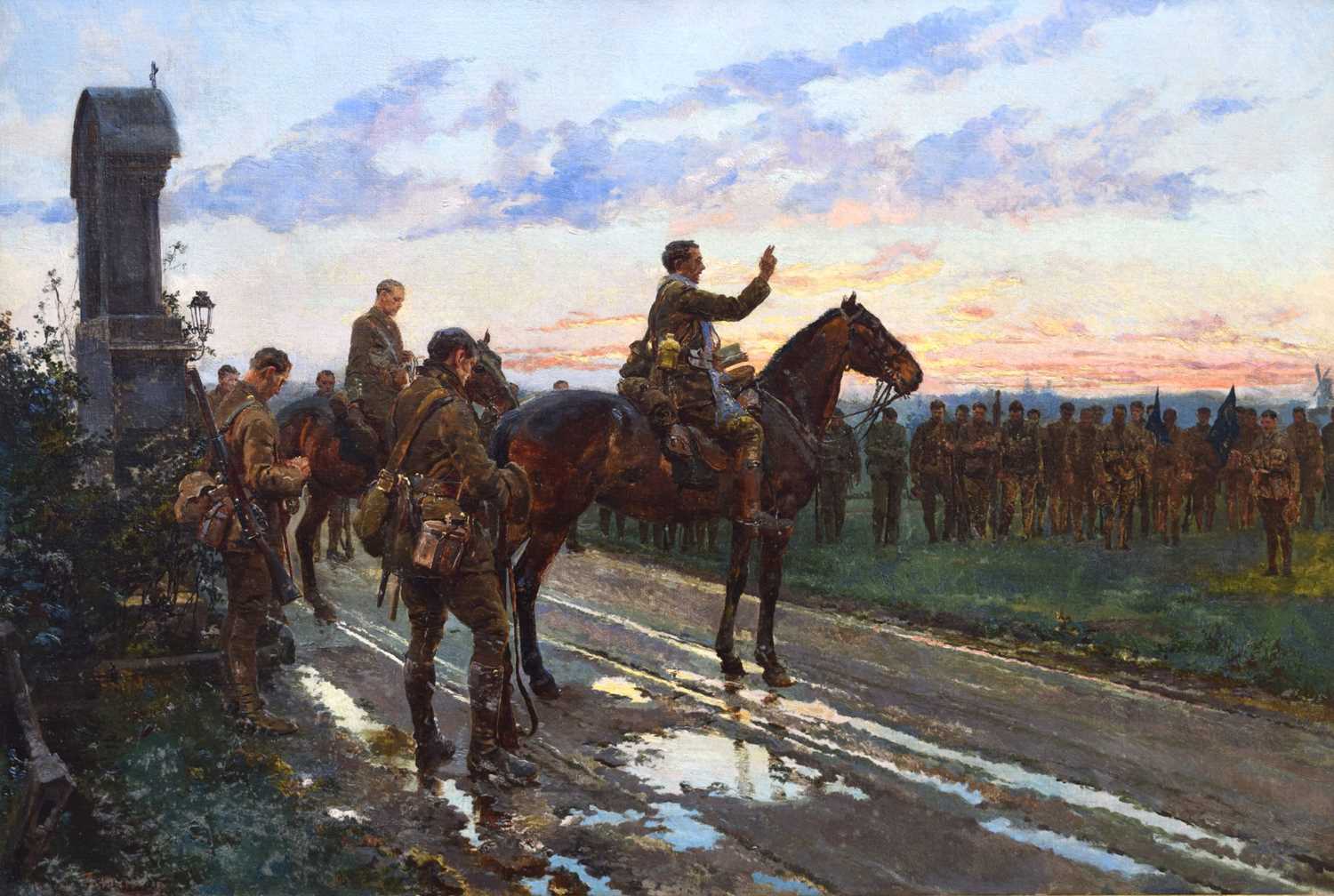

Clevedon Salerooms in North Somerset, England have been entrusted with the sale of part of the principal contents of Gatcombe Court, North Somerset, which includes an important painting, widely regarded as one of the most iconic images of World War One.
The Last General Absolution of the Munsters at Rue du Bois by Italian born war-artist Fortunino Matania (1881-1963) has been described as the most haunting and poignant image of Irish involvement in the First World War. This famous work – long presumed lost - depicts soldiers from the 2nd Battalion, Royal Munster Fusiliers, at a roadside shrine under a setting sun on the eve of the Battle of Aubers Ridge. At the centre of the scene is the unit chaplain, Father Francis Gleeson, widely remembered as the ‘Saint of the Irish trenches, administering General Absolution to the assembled men, most of whom were to die the following day.
In the years following the conflict, prints of the painting hung on the walls of homes throughout Ireland as a memorial to the Irishmen who fought and died in the Great War. The original work, commissioned by the widow of the commanding officer is believed to have been destroyed in the Second World War, making the discovery of this work, by repute, a contemporary copy by the artist, all the more remarkable.
Fortunino Matania (1881 – 1963) has been called the forgotten genius of illustration. Born in Naples, the son of an artist the son of artist, he studied at his father's studio, exhibiting his first work at Naples Academy at 11. In 1904, he travelled to England, joining the staff of The Sphere where some of his most famous work was to appear, including his illustrations of the sinking of the Titanic in 1912. At the outbreak of the First World War, Matania became a war artist and was acclaimed for his graphic and realistic images of trench warfare. Matania was blessed with a photographic memory, was able to work at great speed, producing illustrations that were unnervingly photographic in their realism. Matania’s pictures were superbly accurate and authentic. During the war, he often visited the Western Front, often putting himself in danger to gather material for his work. When not able to do this, he would interview eyewitnesses and take along toy soldiers when he spoke to recovering men in hospital to ensure battle positions were recorded faithfully. Back at his studio, he had an enormous collection of uniforms, weapons and other props to ensure every last detail of his finished picture was correct.
Father Francis Gleeson (1884 – 1959) was an Irish Roman Catholic priest who served as a British Army chaplain in the First World War. Educated at seminaries near Dublin, Gleeson was ordained in 1910 and worked at a home for the blind before volunteering for service upon the outbreak of war. Commissioned into the Army Chaplains' Department and attached to the 2nd Battalion, Royal Munster Fusiliers he served with them at the First Battle of Ypres. During this battle Gleeson is said to have taken command of the battalion after all the officers were incapacitated by the enemy.
This important and profoundly moving painting was offered in Clevedon Salerooms Winter Specialist Sale on December 7th, part of the principal contents of Gatcombe Court, North Somerset, and achieved £21,000 (plus BP).